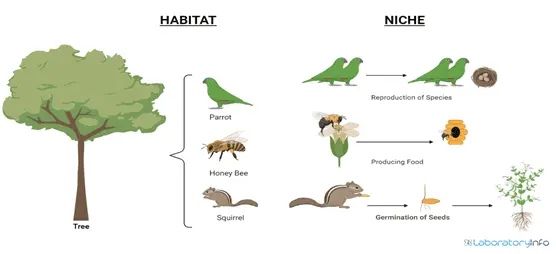Ecological niche modelling
Context
The use of Ecological niche modeling has been started in India, and trying to develop crops and species to grow with the help of technology to reduce the effect of climate change and balance out the demands of the population too.
About
What is an Ecological Niche?
- Niche: An ecological niche is the right set of environmental conditions under which an animal or plant species will thrive or grow.
- A range of ecological niches can occur within an ecosystem.
- Biodiversity is the result of these niches being occupied by species that are uniquely suited to them.
- For example: Desert plants are suited for dry, arid ecological niches because they have the ability to store water in their leaves.

What is Ecological Niche Modelling?
- Ecological niche modelling is a predictive tool for identifying new possibilities or new inhabitants for an existing habitat, and even for new geographical locations where a desirable plant may grow well.
- The modelling involves the use of computer algorithms to compare data about the environment and to make forecasts about the ideal conditions for a given ecological niche.
Significance of Ecological Niche modelling
- Ecologists use information obtained from modelling for conservation efforts as well as for future developments in Agriculture.
- Ecological niche modelling can be used to examine economic feasibilities within the context of changing ecological scenarios.
|
Saffron Plant:
|
How this can be applied in Indian context?
- A recent paper highlights the uses that ecological niche modelling can be put to within the context of India’s geographies and agricultural economies in Himachal Pradesh’s Saffron cultivation strategies.
- Saffron plant is native to Greece; however, it can be grown in soils in parts of Jammu and Kashmir and several states in India.
- India produces 5% of the world’s saffron.
- The temperate climate of Jammu and Kashmir is well-suited with a well-drained soil of high pH value (6.3 to 8.3), summer temperatures (when flowers develop) of around 25°C and good soil nutrient availability.
- Similarly applying this strategy for other native crops can bring economic benefits for other regions too.
What are the stages of development for Niche Modelling?
- Surveying: Firstly, the surveying is to be conducted to analyse the conditions of soil, pH, Temperature and other resources for the crop to be grown.
- For Example; Terrain data for saffron crops (slope, aspect and elevation) came from the Space shuttle radar topography mission (SRTM) Digital Elevation Model.
- Selection of sites: selection of sites by developing sample plant crops in the region.
- Availability of resources: Resources like funds, scientists and researchers, conservation practices from wild animals etc.
Impacts of Ecological Modelling
|
Positive impacts |
Negative impacts |
|
|
Way forward
Governance agencies must be employed for scrutinizing the illegal use of these modelling technologies. More expenditure in research and development (R & D) before implementing for different crops.





